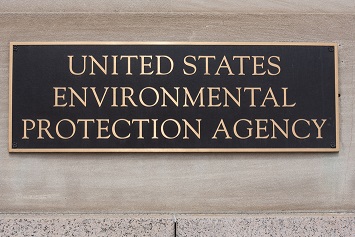In a notice, the EPA reports that it has received requests for regulatory clarity from stakeholders that are uncertain about how the D.C. Circuit’s August 8, 2017, opinion in Mexichem Fluor Inc. v. EPA affects their compliance obligations under an Agency 2015 rule that amended the federal Significant New Alternatives Policy (SNAP) program on ozone-depleting substances (ODSs). The notice provides guidance on how the EPA will implement the court’s partial vacatur of the 2015 rule pending a fresh rulemaking. Below, we summarize the two major clarifications the EPA makes.

SNAP Program
The 2015 rule changed the SNAP listings for certain hydrofluorocarbon (HFC) end uses in the aerosol, refrigeration and air-conditioning, and foam-blowing sectors. The rule also changed the listings for certain hydrochlorofluorocarbons (HCFCs) being phased out of production under the Montreal Protocol and the Clean Air Act (CAA). The rule was an attempt by the Obama EPA to use the SNAP program to regulate substances that contribute to climate change. The court said the CAA limited EPA’s authority to the regulation of ODSs and did not extend to substances that trap heat in the earth’s atmosphere. The court vacated the 2015 rule to the extent that it required manufacturers to replace HFCs with a substitute substance and remanded the rule to the EPA for further proceedings.
Manufacturers and Users
Under the SNAP framework, the EPA established that lists of acceptable and unacceptable substitutes for ODSs applied to manufacturers and users. In its ruling, the D.C. Circuit stated that in the 2015 rule, the EPA exceeded its authority by requiring “manufacturers to replace HFCs with a substitute substance.” (In other words, under the rule, manufacturers must replace a substitute that had been found acceptable with a subsequent substitute in a perpetual fashion.) In contrast to the 1994 SNAP framework, the court did not address users of acceptable substitutes.
In its notice, the EPA makes the following points:
- Nothing in the regulatory language in the 2015 rule draws a distinction between product manufacturers and other users of substitutes.
- Neither does the 2015 rule draw a distinction between persons using HFCs and those using an ODS.
- The regulatory text in the rule is composed solely of tables listing EPA’s decision on certain substitutes for specific end uses.
- Similarly, the 1994 SNAP framework distinguishes neither between product manufacturers and other users nor between someone using an HFC and someone using an ODS. For each specified end use, the 2015 rule in conjunction with the 1994 framework would prohibit any user from using a substitute listed as unacceptable—or from using, without adhering to narrowed use limits, a substitute.
- Thus, the current SNAP regulations do not provide the distinctions that would be necessary to accommodate the letter of the court’s vacatur. The narrower language used by the court does not exist in either the 2015 rule or the 1994 framework.
- While the body of the D.C. Circuit’s ruling is silent on users, in footnote 1 of the opinion, the court indicated that its interpretation “applies to any regulated parties that must replace [ODSs].”
“This appears to extend the court’s holding to apply to any user subject to the HFC listing changes, and not simply manufacturers,” says the EPA. “Implementing the vacatur more narrowly in the near term would not only raise practical implementation difficulties but likely would be inconsistent with the court’s language in footnote 1.”
Therefore, the EPA interprets the court’s ruling to apply to both manufacturers and users of regulated substances.

Lists Vacated
The EPA also clarifies which part of the 2015 rule the D.C. Circuit actually vacated. The Agency says it recognizes that the court vacated the 2015 rule “to the extent that” it requires manufacturers to replace HFCs. However, based on its SNAP expertise, the Agency notes that the vacatur cannot be implemented by treating specific language in the HFC listings as struck by the court.
“Rather,” states the Agency, “the listing of HFCs as unacceptable or acceptable subject to use restrictions, is the means by which the 2015 rule ‘require[d] manufacturers to replace HFCs with a substitute substance.’ Vacating the 2015 rule ‘to the extent’ that it imposed that requirement means vacating the listings. To apply the court’s holding otherwise would be to drastically rewrite the 2015 Rule, and EPA believes that it would not be appropriate to undertake such a rewrite without undergoing notice and comment rulemaking.”
The Agency emphasizes thatits notice is intended to address immediate uncertainty regarding the 2015 rule and the vacatur. However, the larger implications of the court’s opinion require further consideration. Therefore, to address the court’s remand, the EPA says it will move forward with a notice-and-comment rulemaking and seek input from interested stakeholders before developing a proposed rule.
EPA’s notice is here.
